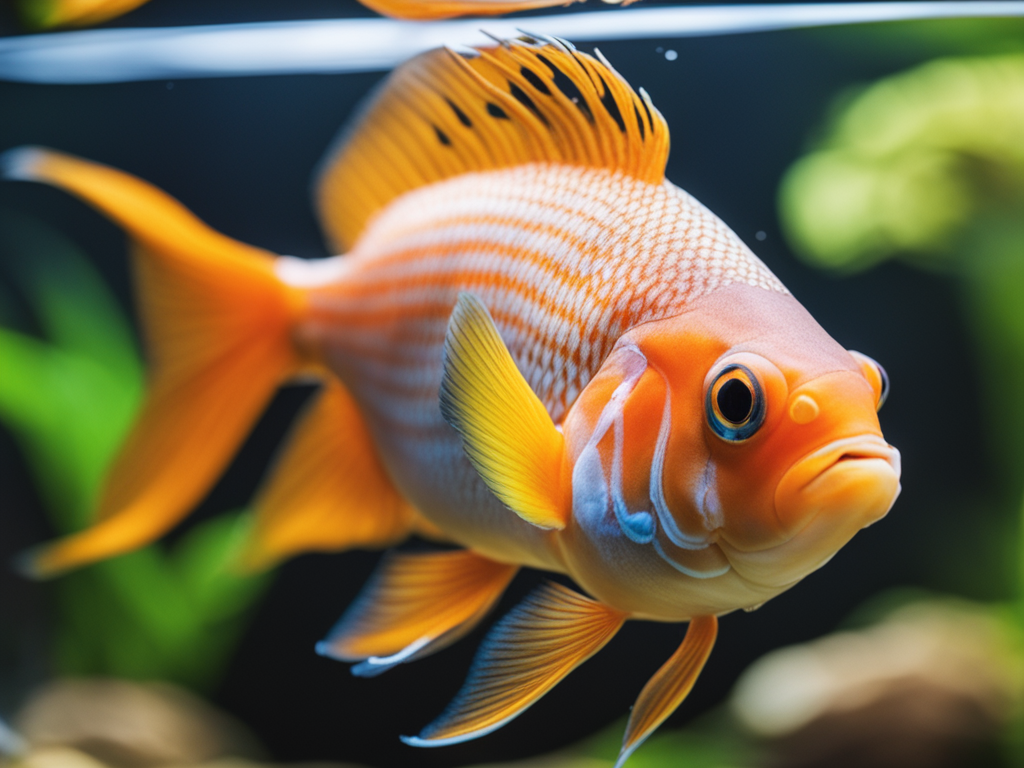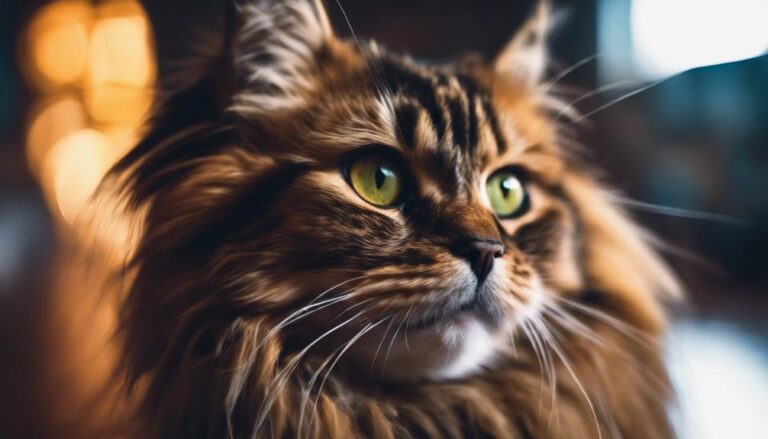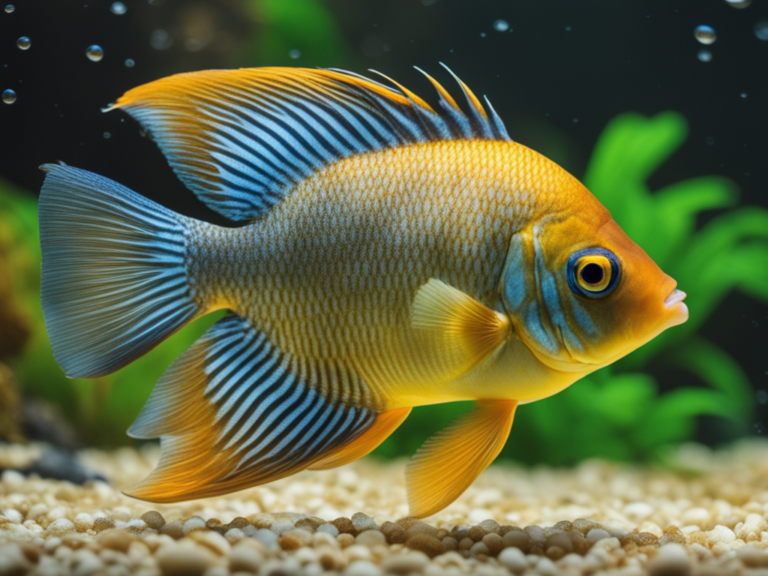Do you want a pet fish that will interact with you and bring life to your home? Look no further than these most interactive pet fish breeds. Betta fish, goldfish, guppies, siamese fighting fish, clownfish, cichlids, killifish, and discus fish are all known for their engaging personalities and ability to bond with their owners. These breeds offer more than just a beautiful addition to your aquarium; they will eagerly swim up to greet you, follow your finger, and even play games with you. Whether you’re a beginner or an experienced fish owner, these interactive fish breeds will provide endless entertainment and companionship. Get ready to dive into the world of interactive pet fish and create a unique bond with your underwater friend.
Betta Fish
When choosing a pet fish that interacts with you, consider getting a Betta Fish. Betta fish, also known as Siamese fighting fish, are known for their vibrant colors and unique personalities. These fish are highly interactive and can provide hours of entertainment. However, they do require specific care tips to ensure their well-being.
Firstly, Betta fish need to be housed in a suitable environment. They should be kept in a tank that is at least 2.5 gallons in size, with a heater to maintain a consistent temperature between 78-82°F. It is important to provide them with plenty of hiding spots, such as plants or caves, to mimic their natural habitat. Regular water changes are also crucial to maintain good water quality and prevent diseases.
Feeding your Betta fish a balanced diet is essential for their health. They are carnivorous and should be fed a high-quality pellet or flake food specifically designed for Betta fish. It is important to avoid overfeeding, as Betta fish are prone to obesity. Feeding them small portions twice a day is usually sufficient.
If you are interested in breeding Betta fish, there are a few techniques to consider. First, you will need a separate breeding tank with a divider to prevent the male from attacking the female. The water temperature should be slightly higher, around 80-82°F, to stimulate breeding behavior. Once the female lays her eggs, the male will gather them and place them in a bubble nest. After the eggs hatch, the fry should be separated into their own tank to prevent cannibalism.
Goldfish
To ensure an interactive pet fish experience, consider getting a few goldfish to liven up your home aquarium. Goldfish are a popular choice for beginner fish owners due to their vibrant colors, playful nature, and relatively low maintenance. Here are some goldfish care tips for beginners:
- Tank size: Goldfish require a spacious tank to thrive. A good rule of thumb is to provide at least 20 gallons of water per goldfish. This allows them to swim freely and reduces the risk of overcrowding.
- Water quality: Goldfish are sensitive to poor water conditions. Regular water changes, using a water conditioner to remove chlorine, and maintaining proper filtration are essential. Test the water regularly for ammonia, nitrite, and nitrate levels to ensure optimal conditions.
- Feeding: Goldfish are omnivorous and should be fed a balanced diet. Offer them a combination of high-quality flakes or pellets and fresh vegetables like peas or spinach. Avoid overfeeding, as it can lead to health issues.
- Tank decoration: Goldfish are curious creatures and benefit from a well-decorated tank. Provide hiding spots, plants, and ornaments for them to explore and interact with. Just ensure that the decorations are fish-safe and won’t harm them.
Goldfish have a rich history and hold symbolism in different cultures. In ancient China, they were a symbol of wealth and good luck. In Japan, they are associated with prosperity and abundance. In Feng Shui, goldfish are believed to bring positive energy and harmony to the home. By following these care tips and appreciating their cultural significance, you can create an engaging and meaningful relationship with your goldfish.
Guppy
For a highly interactive pet fish breed, consider adding guppies to your aquarium. Guppies are not only beautiful, but they are also known for their playful and social nature. Breeding guppies can be a rewarding experience, and there are several techniques you can use to ensure success.
When it comes to guppy breeding techniques, one effective method is selective breeding. This involves choosing the healthiest and most vibrant male and female guppies to breed. By selecting the best specimens, you can enhance certain desirable traits such as coloration or fin shape in future generations.
Another technique is providing the right tank setup for your guppies. Guppies are tropical fish and thrive in warm water temperatures between 72 and 82 degrees Fahrenheit. It is important to maintain a stable water temperature and pH level. A well-planted tank with hiding spots, such as rocks or driftwood, will provide security for the guppies and encourage breeding behavior.
To encourage breeding, you can also create a separate breeding tank. This tank should have a small, fine-leaved plant like java moss or guppy grass, which provides hiding places for the fry. Adding a breeding mop or spawning trap will help protect the fry from being eaten by the adult guppies.
Siamese Fighting Fish
Consider adding Siamese Fighting Fish to your aquarium for an interactive pet fish breed that will captivate and entertain you. These beautiful and vibrant fish, also known as Betta fish, are not only visually stunning but also display fascinating behaviors. Here are four reasons why Siamese Fighting Fish make an excellent choice for a captivating pet fish:
- Breeding techniques for Siamese Fighting Fish: If you’re interested in breeding fish, Siamese Fighting Fish offer a unique challenge. Their breeding process involves creating the perfect environment, introducing the male and female fish, and carefully monitoring their behavior. By learning and implementing the appropriate breeding techniques, you can witness the remarkable sight of the male building a bubble nest and tending to the eggs.
- Unique color variations in Siamese Fighting Fish: One of the most remarkable features of Siamese Fighting Fish is their wide range of colors and patterns. From bright oranges and deep blues to striking reds and greens, these fish come in a stunning array of hues. Some Siamese Fighting Fish even exhibit iridescent scales that shimmer in the light, adding an extra level of visual appeal to your aquarium.
- Interactive behaviors: Siamese Fighting Fish are not just beautiful to look at; they also display interactive behaviors that will keep you engaged. These fish are known for their territorial nature and can display aggression towards other fish, especially males. However, they can also recognize their owners and respond to stimuli. By providing them with an enriched environment and regular interaction, you can witness their curious and playful nature.
- Low maintenance: Despite their stunning appearance and interactive behaviors, Siamese Fighting Fish are relatively low maintenance pets. They thrive in small aquariums and do not require the same level of care as some other fish breeds. With proper water conditions, regular feeding, and occasional tank cleaning, you can enjoy the company of these captivating fish without a significant time commitment.
Clownfish
If you regularly interact with your pet fish and want an engaging addition to your aquarium, look no further than clownfish. These colorful and lively creatures are known for their playful nature and interactive behavior, making them a popular choice among fish enthusiasts.
Breeding clownfish can be a rewarding experience, but it requires careful attention to detail. To successfully breed clownfish, you will need a separate breeding tank with plenty of hiding spots and live rock for the fish to lay their eggs. The water temperature should be around 80 degrees Fahrenheit, and a pH level of 8.1 to 8.4 is ideal. Introducing a pair of clownfish to the breeding tank and providing them with a high-quality diet will encourage spawning. Once the eggs are laid, it is important to carefully monitor the water conditions and remove any unfertilized eggs to prevent fungus growth.
Maintaining a healthy clownfish tank is essential for their well-being. These fish thrive in a well-established aquarium with stable water parameters. Regular water changes, along with proper filtration and a protein skimmer, are crucial for maintaining water quality. Clownfish are also known to form symbiotic relationships with anemones, so providing them with a suitable host anemone can enhance their overall health and happiness.
Cichlids
Cichlids are an incredibly interactive pet fish breed that you will enjoy having in your aquarium. These vibrant and intelligent fish are known for their engaging behavior and ability to interact with their owners. Here are some important things to know about cichlids:
- Breeding habits: Cichlids are known for their unique breeding habits. Unlike many other fish species, cichlids are dedicated parents that care for their young. They create nests and protect their eggs and fry, ensuring their survival. Witnessing this parental behavior can be a fascinating experience for fish enthusiasts.
- Tank setup requirements: Providing the right tank setup is crucial for the health and well-being of your cichlids. These fish require spacious tanks with plenty of hiding places, such as rocks, caves, and plants. They also prefer a sandy substrate and water with a pH level between 7 and 8. Additionally, maintaining proper water temperature and filtration is important for their overall health.
- Variety of species: Cichlids come in a wide variety of species, each with its own unique characteristics and requirements. From the colorful African cichlids to the majestic South American cichlids, there is a cichlid species to suit every aquarist’s preferences. Researching and selecting the right species for your aquarium is crucial to ensure compatibility with other tank inhabitants.
- Social behavior: Cichlids are known for their social behavior, often forming hierarchies within their group. They display fascinating interactions and communication through body language, territorial displays, and color changes. Observing their social dynamics can be both educational and entertaining.
Killifish
Now let’s talk about the highly interactive and fascinating pet fish breed: Killifish. Killifish are known for their vibrant colors and interesting behavior, making them a popular choice for aquarium enthusiasts. These small fish are native to various habitats around the world, including Africa, South America, and Asia.
When it comes to breeding habits, Killifish are unique. They have a fascinating reproductive strategy called annual killifish. This means that they lay their eggs in temporary bodies of water, such as puddles or small ponds, which only exist during the rainy season. The eggs then undergo a dormant period until the next rainy season arrives, at which point they hatch and continue their life cycle. This adaptation allows Killifish to thrive in areas with unpredictable water availability.
In terms of habitat preferences, Killifish have specific requirements. They prefer densely planted aquariums with plenty of hiding spots, such as rocks, caves, and driftwood. These habitats mimic their natural environment and provide them with a sense of security. It is also essential to maintain a stable water temperature and quality to ensure their well-being.
Killifish are highly interactive pets and can recognize their owners. They will eagerly swim up to the glass when approached and may even follow your finger. Their active nature and curious behavior make them a joy to watch and engage with.
Discus Fish
Moving on to the next interactive pet fish breed, let’s talk about the fascinating Discus Fish. These beautiful creatures are known for their vibrant colors and interactive behavior, making them a popular choice among fish enthusiasts. If you’re considering getting a Discus Fish as a pet, here are some important things to know:
- Discus Fish Breeding Techniques: Breeding Discus Fish can be a rewarding experience, but it requires careful planning and preparation. To encourage breeding, maintain a consistent water temperature of around 82-86°F and provide a nutritious diet. It’s also essential to create a separate breeding tank with soft, acidic water conditions, and plenty of hiding spots for the fish to lay their eggs.
- Discus Fish Tank Setup Tips: Creating the perfect environment for your Discus Fish is crucial for their well-being. Start by choosing a spacious tank with a minimum capacity of 50 gallons, as Discus Fish need ample room to swim. Maintain a temperature between 82-86°F and a pH level of 6.0-6.5 for optimal health. Decorate the tank with plants, rocks, and driftwood to mimic their natural habitat. Additionally, consider providing a dimly lit environment to reduce stress and simulate their native Amazonian ecosystem.
- Proper Diet and Feeding: To keep your Discus Fish healthy and happy, provide them with a varied diet. Include high-quality flakes, pellets, and frozen or live foods such as bloodworms, brine shrimp, and daphnia. Feed them small amounts multiple times a day to prevent overeating and maintain water quality.
- Water Quality and Maintenance: Discus Fish are sensitive to water conditions, so regular maintenance is vital. Perform frequent water changes of 25-50% every week to keep ammonia and nitrate levels low. Use a good filtration system and test the water regularly for pH, ammonia, nitrite, and nitrate levels to ensure a clean and healthy environment for your Discus Fish.
Frequently Asked Questions
What Are the Ideal Tank Conditions for Betta Fish?
To create a suitable habitat for betta fish, you need to provide them with ideal tank conditions. This includes a tank size of at least 5 gallons, a heater to maintain water temperature between 78-80°F, and plenty of hiding spots and plants for their comfort.
Can Goldfish Live in a Bowl Without a Filter?
Goldfish should not live in a bowl without a filter. It’s important to provide proper filtration and regular water changes to maintain their health. Here are some maintenance tips for a goldfish bowl to ensure a healthy environment for your fish.
How Often Should I Feed Guppies?
You should feed your guppies two to three times a day in small portions. A healthy guppy diet consists of a variety of foods such as flakes, pellets, and live or frozen treats.
Are Siamese Fighting Fish Compatible With Other Fish Species in a Community Tank?
Siamese fighting fish, also known as betta fish, are known for their aggression. When it comes to tank mates, it’s important to choose carefully. Some compatible options include peaceful fish like neon tetras or ghost shrimp.
What Is the Lifespan of a Clownfish in Captivity?
Clownfish in captivity have an average lifespan of 6 to 10 years. Their breeding habits involve a monogamous pair, with the male taking care of the eggs. They come in various color variations, including orange, black, and even pink.
Conclusion
In conclusion, when it comes to choosing an interactive pet fish, there are several breeds to consider. Betta fish, with their vibrant colors and playful nature, make great companions. Goldfish are known for their intelligence and ability to recognize their owners. Guppies are social fish that enjoy interacting with their surroundings. Siamese fighting fish are highly interactive and can even be trained to perform tricks. Clownfish, cichlids, killifish, and discus fish also offer unique interactive qualities. Ultimately, the choice depends on personal preferences and the level of interaction desired.









